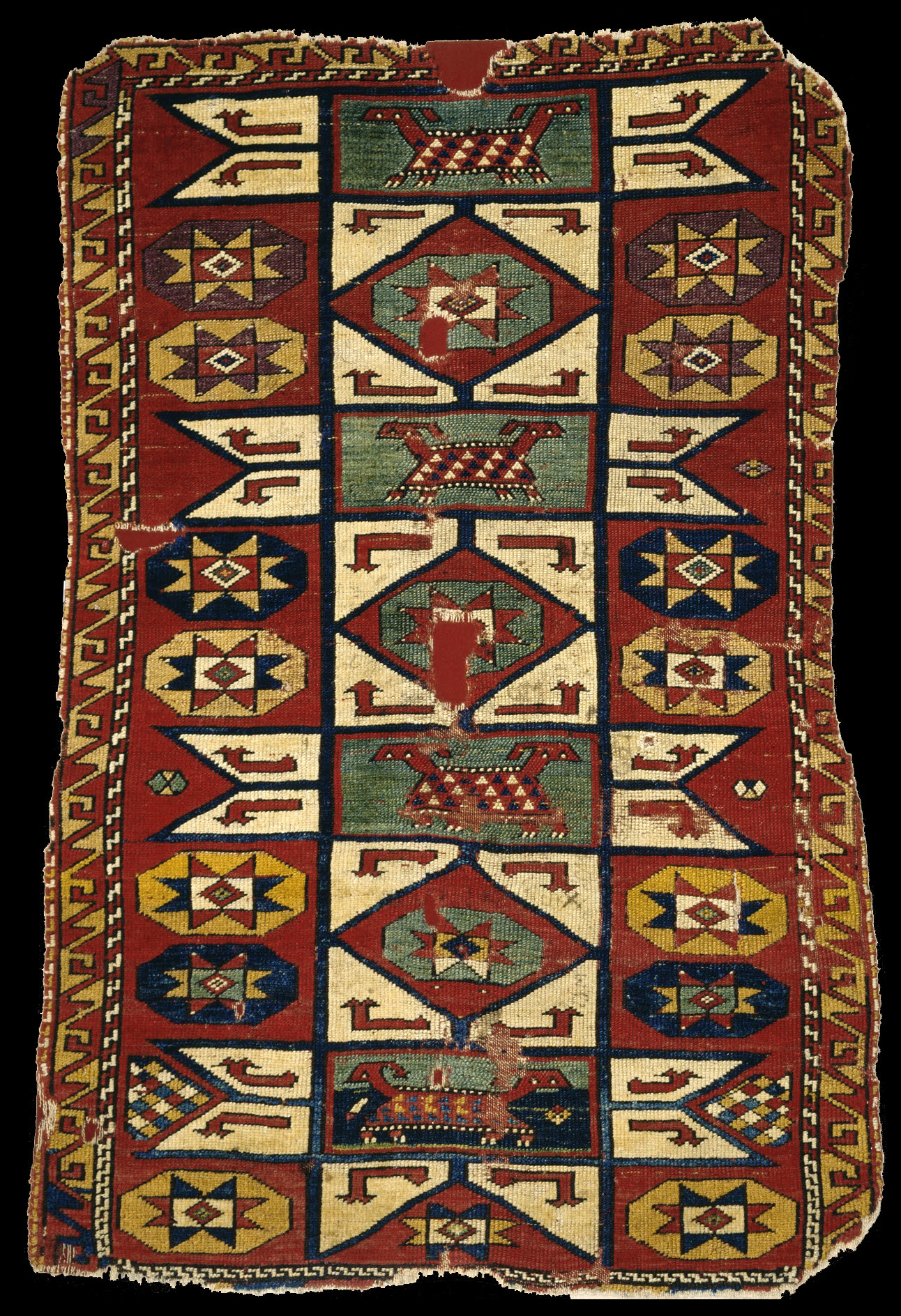|
Animal rug with
star motifs, Pergamonmuseum, Staatliche Museen zu Berlin (inventory No.
85.984), XV century,
Turkey (Ottoman) or Caucasus (Nakhchican or Kazak / Karakoyunlu State)
|
There have frequently been rugs or carpets that did not belong to any
recognized class and were therefore for a long time neglected. One such is
this rug, acquired by Wilhelm von Bode in 1885. In 1909 it was transferred
from the Kunstgewerbemuseum to the Kaiser-Friedrich-Museum, but received no
attention among the carpets of the famous Berlin collection, and was only
rediscovered in 1982, in the course of a reappraisal of the Turkish carpets
by Friedrich Spuhler. The field with its red ground has several rows of
large eight-pointed stars. The knotter, though, has altered the motif,
drawing the stars together into a long central strip, so that the individual
stars can no longer be recognized. The basic shape can be seen in the small
eight-sided stars in the octagons with the differently coloured ground
distributed across the rest of the field. The narrow border has hook motifs.
This rug does not have the refinement of those produced for the court, but
is fascinating in the arrangement of its motifs and the expressive force of
the colour. All the evidence points to a nomadic or village origin. The presence of the double-headed animals makes the rug an
'animal carpet', and it is in this context that it is displayed in the
museum, alongside the famous dragon-phoenix carpet and the carpet with
lozenge pattern and stylized birds. Within this unique group it makes an
important contribution to our understanding of Turkish carpets.
Credit Line: Physical Format: w89 x h144 cm
Medium: Wool


The two-headed animals in the centers of the stars are articulated
completely with offset knotting, including small triangles ornamenting the
bodies. This rug is thought to be from western Anatolia, and perhaps the
16th century. All other parts of this rug are knotted in the normally
aligned fashion. (text: Marla Mallett: Early Examples of Offset Knotting)
|


